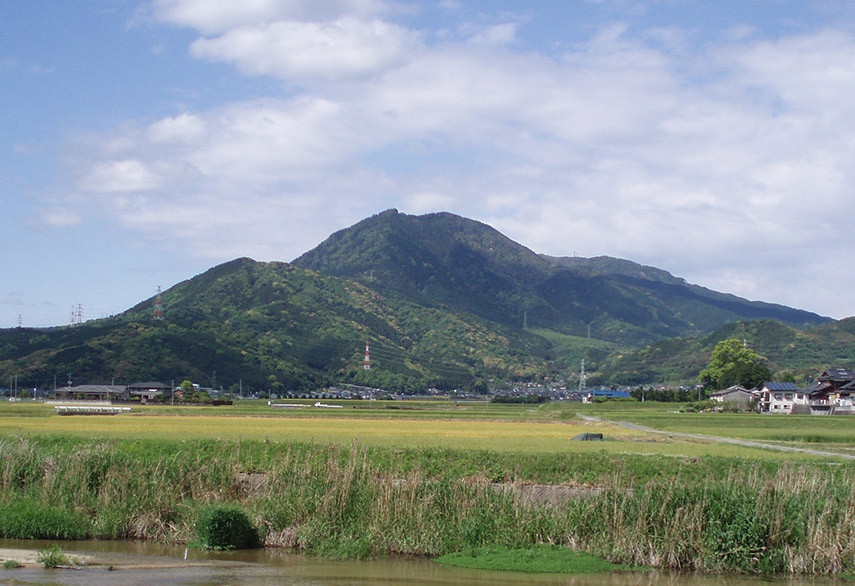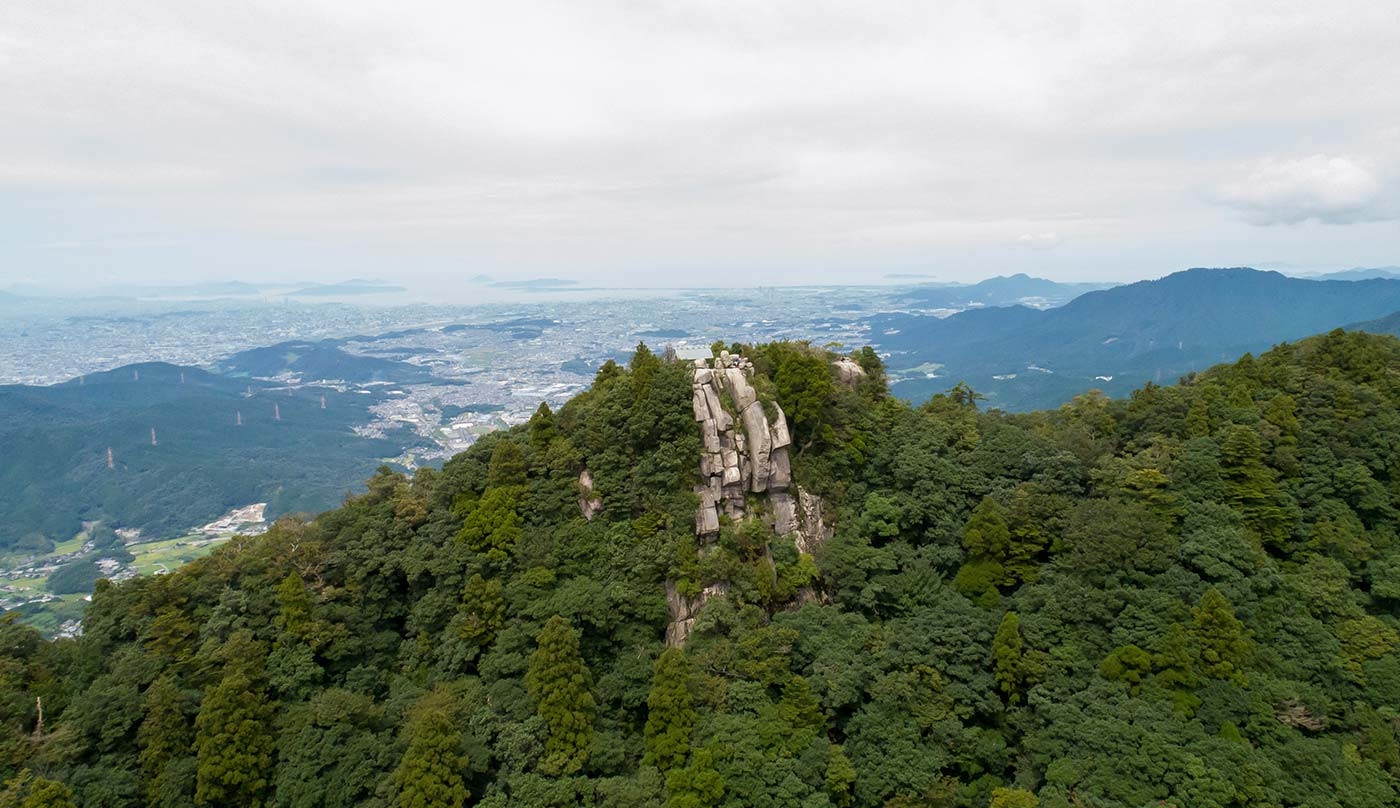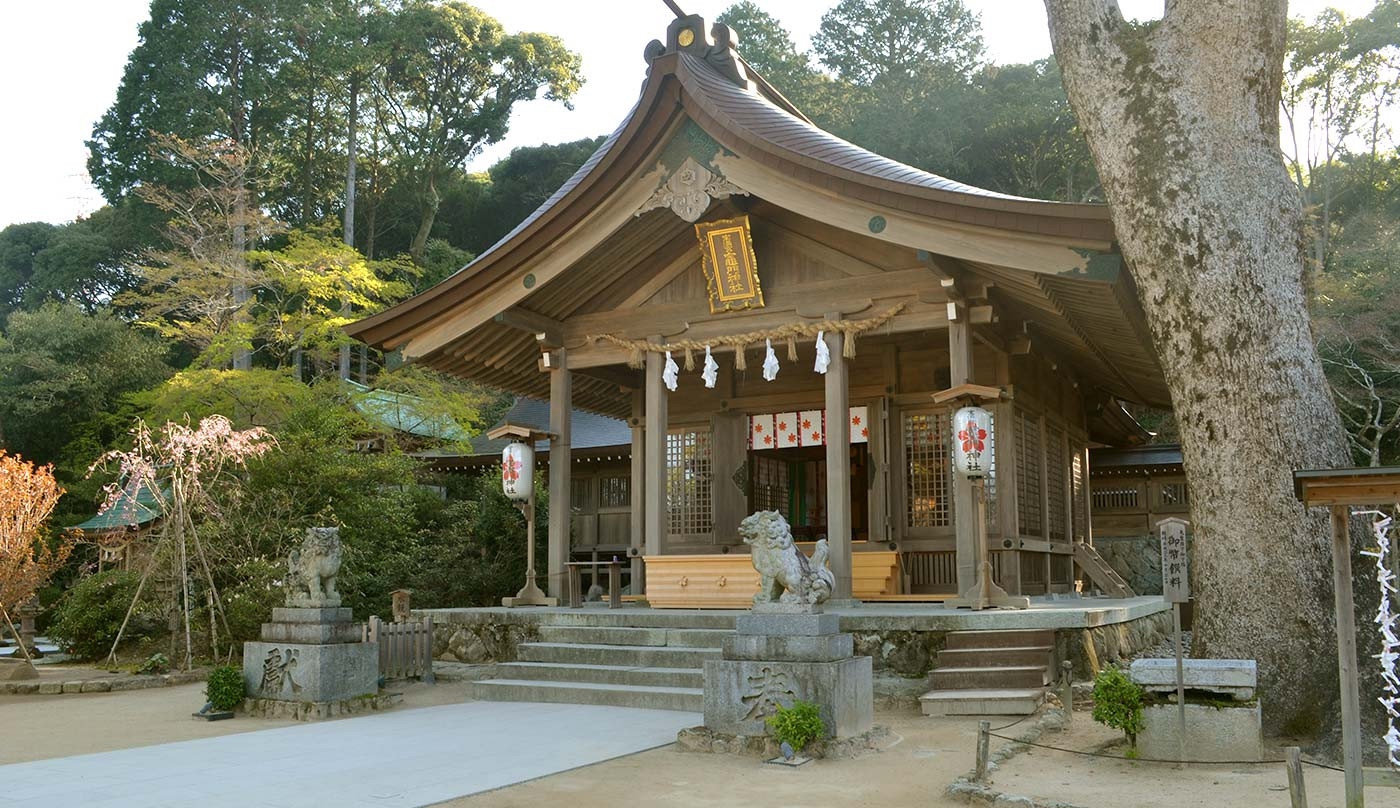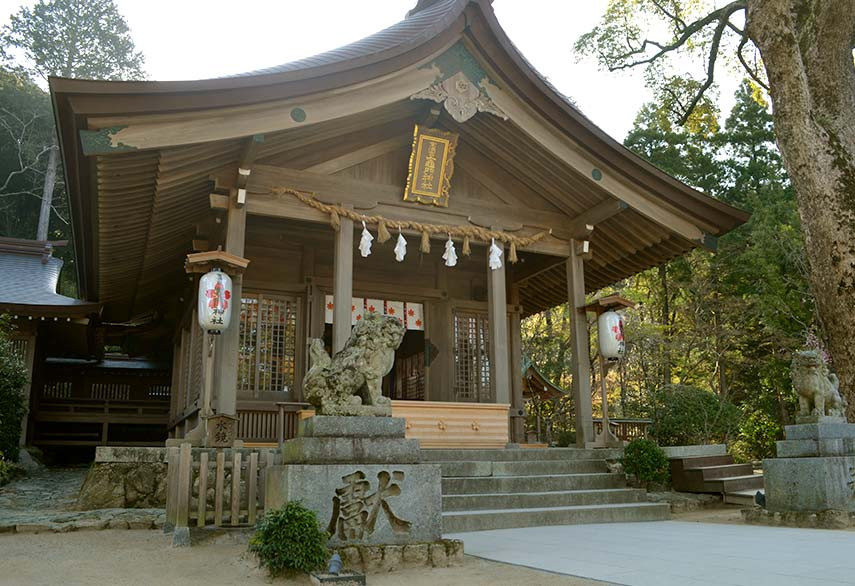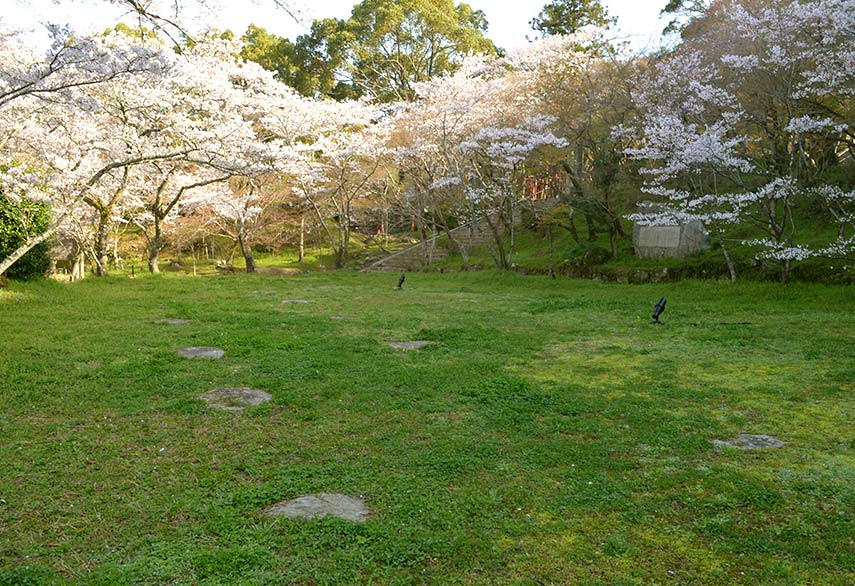
Mount Homan
| Location | City of Chikushino・City of Dazaifu |
|---|---|
| Designation | National Historical Site |
| Emblem | 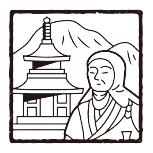 |
This beautifully shaped 829 meters mountain in the northeast of Dazaifu was once called Mt. Mikasa. From the Nara period, national border rituals were carried out on this mountain. According to one record, monk Saicho sculpted a Yakushi Buddha statue here before going to Tang China, praying for a safe sea voyage. After returning, he set out to build six pagodas in Japan; and the Anzai Pagoda was built here. During the middle ages, a temple and administrative office for Dazaifu were built here, and trade with foreign countries was conducted. Now it is the site of Kamado Shrine, and it conveys the flavor of the ancient rituals conducted on the mountain.
A Mountain of Prayer To The Northeast
Mount Homan, with its peak at 829 meters in altitude, is home to Kamado Shrine on the summit, Chu-gu (middle shrine) on the flat area at the eighth station up the mountain (altitude 725 m), and Ge-gu (lower shrine) of Kamado at the foot of the mountain. Called Mount Kamado in ancient times, it is said that the monk Saicho built a statue of the Healing Buddha at Kamado Shrine in 803 to pray for safe passage to Tang China. This was also a prayer for the monk Ennin, who returned to Japan after studying in China as the last envoy to the Tang, and he would read sutras at Daisen-ji Temple (Kamadosan-ji Temple) and pray for safety for his life-threating trip overseas. The remains of buildings called the Ge-gu Cornerstones next to the promenade leading to Ge-gu (lower shrine) are currently believed to be the site of the central building of Kamado Shrine. The summit offers sweeping views of Hakata Bay and the Genkai-Nada Sea, and ritual items such as Nara Sansai jars, coins, and talc products have been excavated from the around the rocks there, leading scientists to believe that national rituals for dispatching envoys to the Asian continent were held here.

Chikushino City Characters/Tsukushi-chan
Since antiquity, Mount Homan has been called a “Mountain of Prayer” and serves as a bedrock of support to people to this day. Climb the road up the mountain from Kamado Shrine to find Jo-gu (upper shrine) against the vast sky, then look down to find sprawling plains and giant boulders welcoming you. These exposed rocks create a different, more solemn atmosphere than the plains. Experience for yourself a place of prayer for national peace, safe journeys, and more.
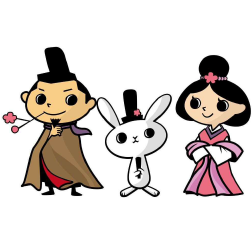
Dazaifu City Characters/Tabito the Traveler, Otomo no Tabitto, Princess Reiwa
Mount Homan is also famous for its beauty, with cherry blossoms in spring and red leaves in autumn, and Kiyohara no Motosuke, father of “The Pillow Book” author Sei Shonagon, wrote this poem of the mountain: “Budding in spring, darkening in autumn, Mount Kamado.”
The highlight is Kamado Shrine. With over 1,000 years of history, this ancient shrine now has an office with modern art displays, and is also a popular spot for its god of marriage and also because it was featured in the popular anime “Demon Slayer”.
Access Information
Address
Kamado Shrine:818-0115 833 Uchiyama, Dazaifu, Fukuoka
By Train
About 40 min on foot from Nishitetsu Dazaifu Station
By Car
About 20 min from the Dazaifu IC on the Kyushu Expressway
About 25 min from the Chikushino IC on the Kyushu Expressway

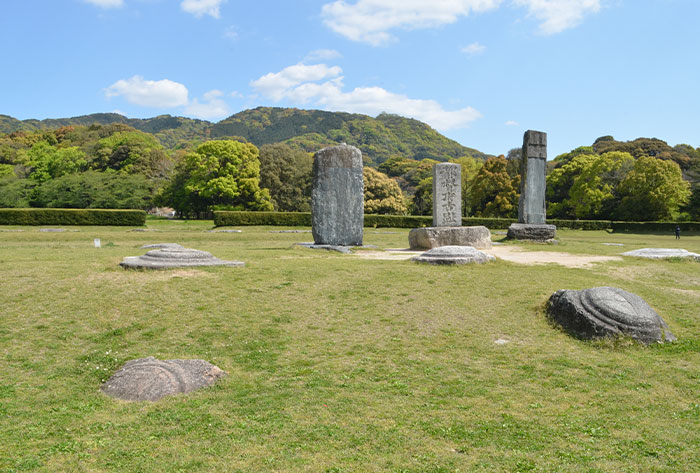
About the Western Capital
The “Western Capital”, created in Tsukushi 1300 years ago. Cultural assets speaking to the magnificence of this city of international exchange that flourished in East Asia are scattered across the cities of Chikushino, Kasuga, Onojo, Dazaifu, Nakagawa, and Umi in Fukuoka Prefecture as well as the town of Kiyama in Saga Prefecture.

